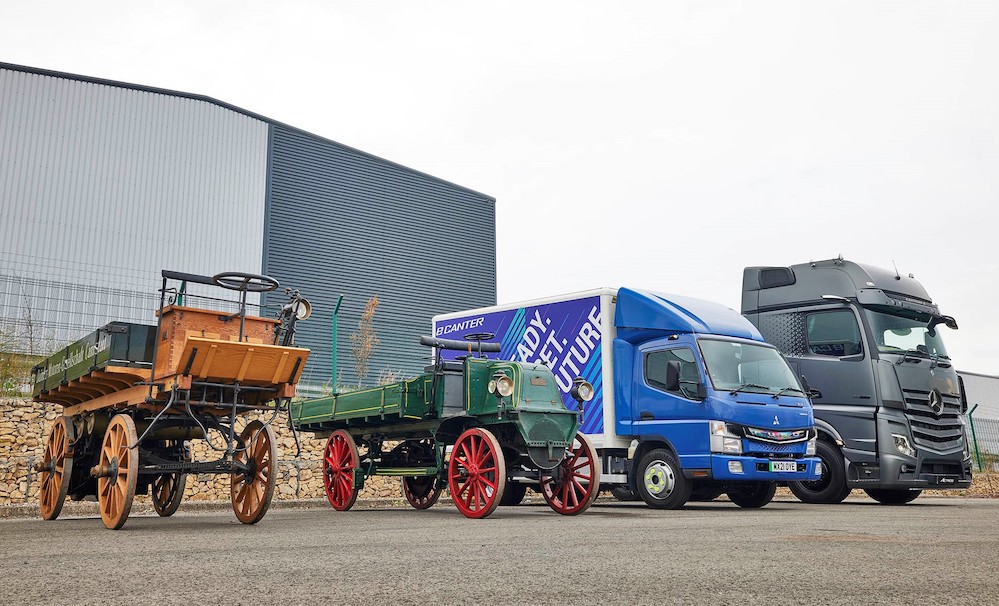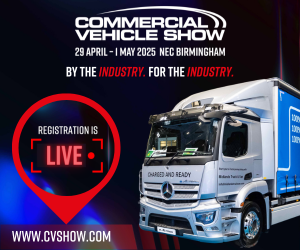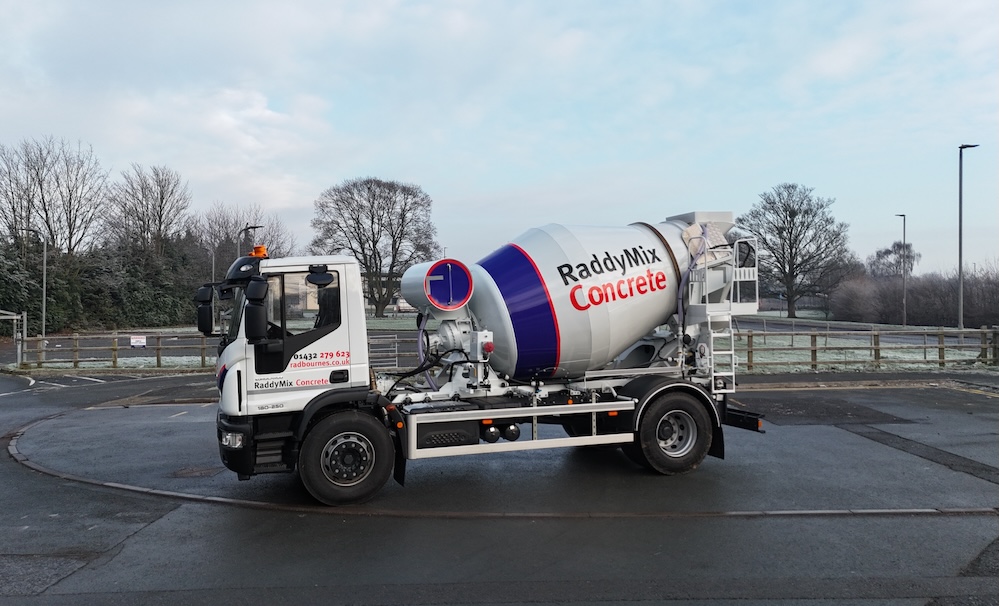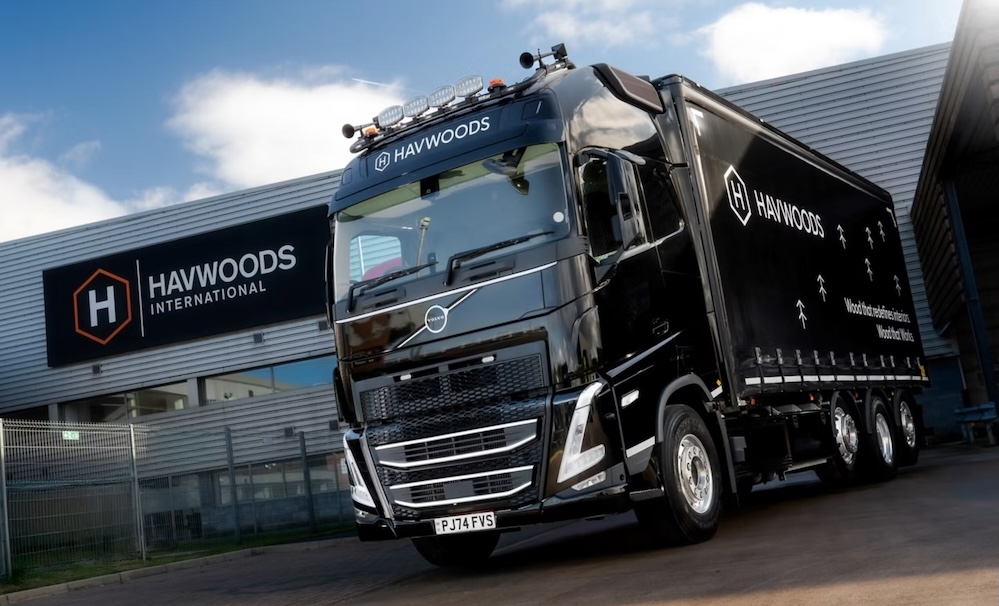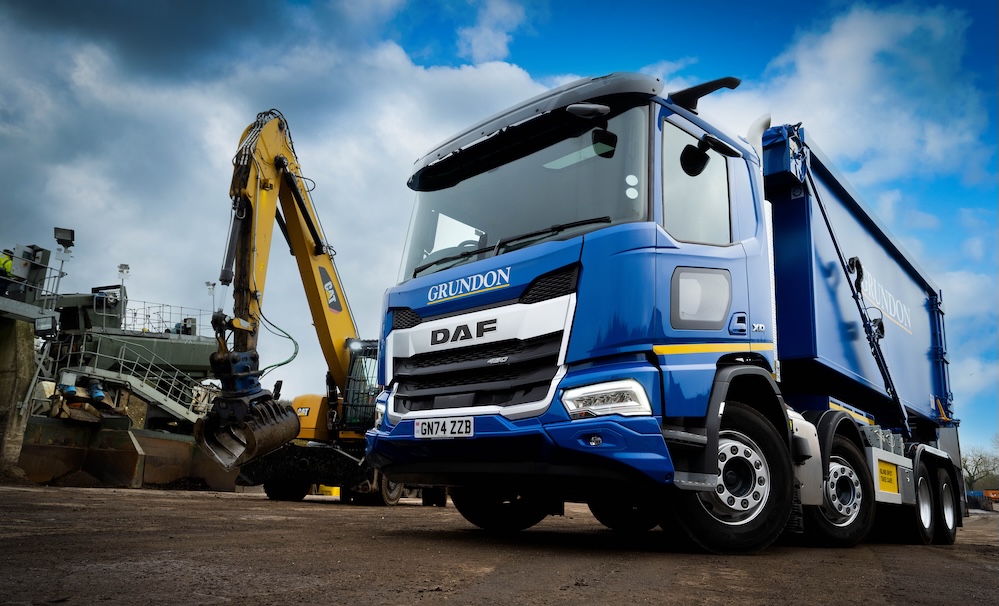Mercedes-Benz Trucks UK has marked the 125th anniversary of the motorised truck by presenting a magnificent replica of the vehicle that gave birth to a global industry.
The ‘first truck’ took pride of place on the company’s stand at the Freight in the City Expo, which opened today (28 September) at London’s Alexandra Palace, alongside a low-entry Mercedes-Benz Econic tractor unit and a battery-powered FUSO eCanter.
Remarkably, the event represented something of a homecoming for the legacy vehicle. The world’s first truck was built in Stuttgart by Daimler-Motoren-Gesellschaft and unveiled on 18 August 1896. It was sold six weeks later, on 1 October, to the British Motor Syndicate, a company with registered offices at 59 Holborn Viaduct, in the City of London.
The motor truck was designed by engineering genius Gottlieb Daimler, one of the two ‘founding fathers’ – the other being Karl Benz – of the company that would become Mercedes-Benz.
Mounted at the back, a four-horsepower, two-cylinder ‘Phoenix’ engine with a displacement of 1.06 litres was linked to the rear axle by a belt. The driver sat on a bench seat, totally exposed to the elements, using a wheel mounted on a vertical column to steer.
The truck’s artillery-type spoked wooden wheels were shod with iron, while the suspension employed a combination of leaf springs at the front and, to protect the fragile engine from excessive shaking, coil springs at the back. Braking was by a foot pedal linked by rods to wooden shoes applied to the metal rims of the rear wheels.
Built at great expense in 1990, the precious replica was transported from the Mercedes-Benz Museum to London, where, in commemoration of that first truck delivery, it was also the subject of an evocative photoshoot at Holborn Viaduct.
With it on the semi-trailer sent across from Germany for Mercedes-Benz Trucks UK’s anniversary celebrations was a second historic truck, an original vehicle from 1898. By now the engine, a six-horsepower installation in this case, had been relocated to a position beneath the driver’s seat, while the four-gear belt drive had also been moved forward.
This solution paved the way, later in the same year, for the engine to be transferred to the very front of the vehicle, ahead of the leading axle, and the incorporation of a front-to-rear longitudinal shaft and pinion to the internal ring gears on the rear wheels. Fundamentally, it is the configuration that prevails to this day.
Why, though, was the world’s first motorised truck sold to a British customer and not, as might have been expected, one in Germany? Unlike the car, which was embraced by private buyers because it extended opportunities for personal freedom, the truck met with scepticism from German industry.
Capital goods had to earn money and Daimler, who also invented the motorcycle, the motorised handcar (the first rail vehicle with a gasoline engine) and a motorised fire-fighting pump, struggled to find buyers in his home country. It was in Britain, cradle of the industrial revolution, that the real market emerged.
By happy coincidence, in 1896 Parliament consigned the Red Flag Act to history. This was a decree by which the horse lobby had successfully defended itself – it dictated that a machine-driven vehicle could not travel any faster than four miles per hour, and had to carry a crew of three, two to operate it and one to walk ahead, red flag in hand, to warn other road users.
Field trials were also common in England in the late 1890s, and in these the early Daimler trucks met with great success against the main competition: the steam lorry. Several London stores put them into service and in 1901 the Post Office acquired its first motor vehicle, a Daimler.
The story of Mercedes-Benz is integral to the story of the truck, and the two historic vehicles have also been shown at the manufacturer’s UK head office in Milton Keynes and its Wentworth Park truck complex near Barnsley, as well as the Mercedes-Benz World brand experience centre at Brooklands, Surrey.
Meanwhile, the company’s theme at this week’s Freight in the City, an event that promotes sustainable urban deliveries, is ‘Past, Present, Future’. Head of Marketing Katie Purcell explained: “As far as the ‘Past’ is concerned, we’re immensely proud at Mercedes-Benz Trucks UK of our unique and unrivalled heritage.”
Turning to the ‘Present’, and the two modern vehicles on its stand, she continued: “The Econic’s unrivalled Direct Vision credentials mean it’s already the chassis of choice for many safety-conscious customers whose vehicles work in urban applications. From an emissions perspective, like all diesel-engined Mercedes-Benz trucks the Econic can also operate ‘straight out of the box’ on biodiesel and Hydrotreated Vegetable Oil (HVO) fuel and retain full warranty cover.
“FUSO, of course, is also part of the Daimler ‘family’ and its Canter range is sold and supported here in the UK by the Mercedes-Benz Dealer network. As the world’s first fully electric light-duty truck to enter series production, the 7.5-tonne eCanter represents a major advance in the battle to improve air quality in towns and cities.”
Encapsulated in a visual presentation, Mercedes-Benz Trucks has adopted a dual-pronged approach to the achievement of an emissions-free ‘Future’ based on a combination of battery and hydrogen fuel cell technology. The first battery-powered eActros and eEconics will reach the UK next year, with eActros LongHaul further down the line and testing of the GenH2 hydrogen prototype now well underway.
“We’re thrilled to be giving Freight in the City visitors this rare opportunity to witness at first hand the vehicle that heralded the age of the motorised truck,” added Katie Purcell. “However, with the era of the internal combustion engine now drawing to a close, our focus is firmly on the future and the introduction of new and innovative products that will ensure the sustainability of the road transport sector for generations to come.”


